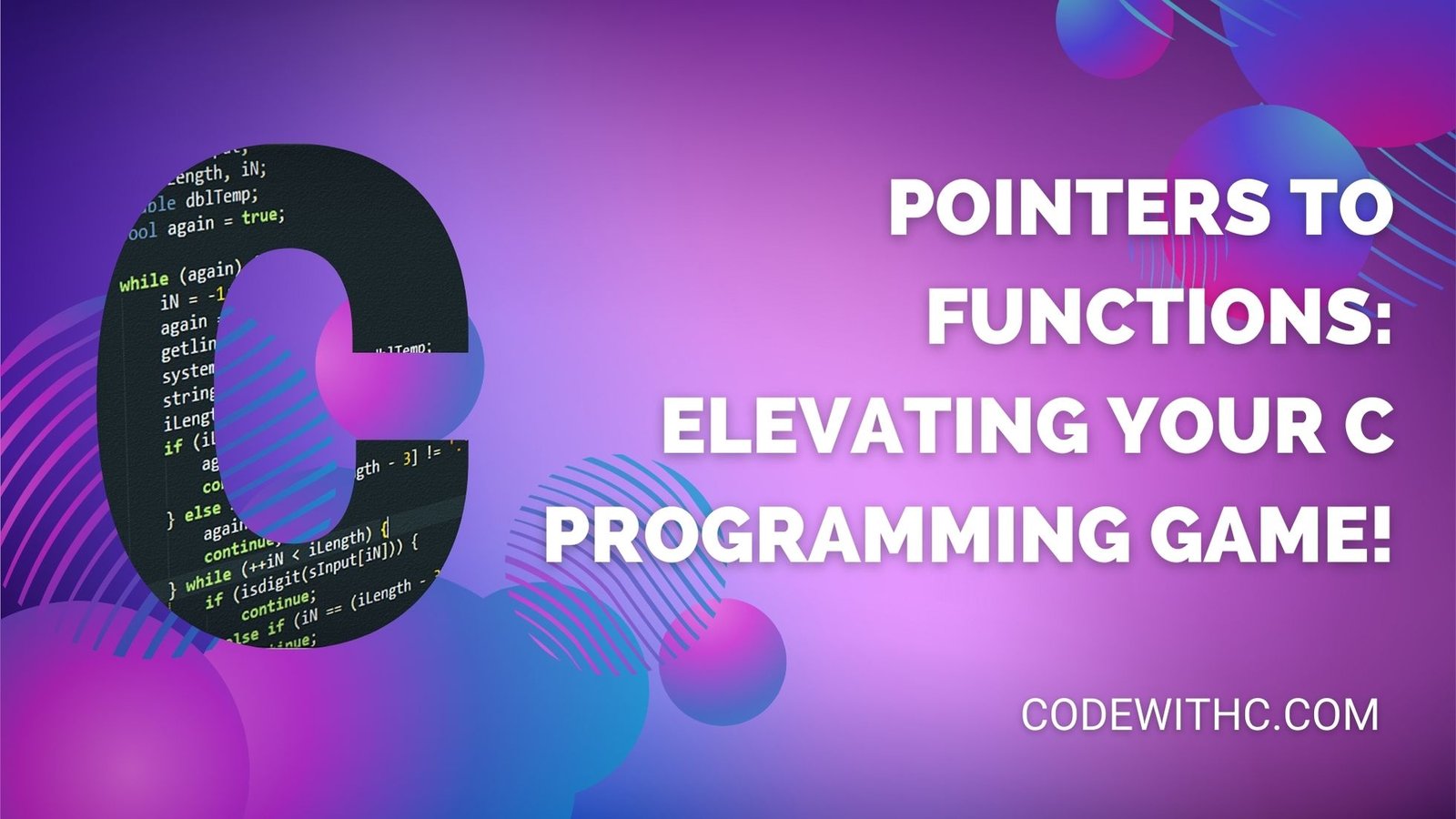Ever gazed at the vast C programming landscape and wondered about the peaks of its complexities? Among those peaks, one that stands tall is “Pointers to Functions”. This feature, though seemingly daunting, is a powerful tool in the arsenal of a C programmer. Today, we’re embarking on a journey to understand, appreciate, and master this concept. Buckle up, fellow code enthusiasts!
Understanding Pointers to Functions
We all know pointers – those memory address-storing variables that have given many of us sleepless nights. Now, imagine those pointers pointing not just to variables but to functions! Yep, that’s right. Just as functions reside in memory, pointers can store their addresses, enabling us to do some pretty neat stuff like invoking a function via its pointer, passing functions as parameters, or even returning functions from other functions.
The Power and Why You Should Care
Ever stumbled upon the qsort() function in C? It’s a powerful utility in the standard library that can sort arrays of any data type. But here’s the catch: How does it compare custom data types? The answer is function pointers. Bypassing our comparison logic as a function pointer, we can keep qsort() generic and adaptable. This principle extends to many other areas in C, allowing for flexible and modular code.
Getting Down to Syntax: Declaration and Initialization
Alright, let’s get our hands dirty. Declaring a function pointer might seem a bit intimidating at first. Consider a function int foo(int). A pointer to this function would look like this:
int (*func_ptr)(int);
Notice the parentheses around *func_ptr? They make all the difference. Without them, you’d just be declaring a function returning an integer pointer, and we don’t want that, do we?
A Real-world Application: Function Pointers in Action
The theory is great, but the real fun begins with practical application. Let’s craft a program that leverages function pointers for some basic arithmetic operations.
#include <stdio.h>
// Declaring functions
int add(int a, int b) { return a + b; }
int subtract(int a, int b) { return a - b; }
int main() {
int (*operation)(int, int); // Our function pointer
operation = add;
printf("Addition of 5 and 3: %d\n", operation(5, 3));
operation = subtract;
printf("Subtraction of 5 from 3: %d\n", operation(5, 3));
return 0;
}
Deep Dive into the Code
This program, at its core, is simple yet elegant. We start with two functions: add and subtract. The function pointer operation serves as our flexible tool. By pointing it to the add function, we can perform addition, and by pointing it to subtract, we perform subtraction.
The beauty here is in the flexibility. Imagine having an array of such function pointers, each pointing to a different operation. You’d have a calculator at your fingertips!
Expected Output for the Curious
Running our nifty program will yield:
Addition of 5 and 3: 8
Subtraction of 5 from 3: 2
Concluding Thoughts and Forward Path
Pointers to functions, though a bit challenging to grasp initially, are a testament to C’s power and flexibility. Whether you’re aiming for modular code, crafting callback mechanisms, or designing table-driven approaches, they’ve got your back.
If you’re looking to push further into the realm of advanced C, function pointers are a stepping stone. There’s a world out there with multi-threading, socket programming, and more, waiting for you. So keep the momentum going, never stop learning, and remember – in the world of programming, sky’s the limit!
And before we wrap up, a nugget of wisdom: Pointers are like wild stallions. Master them, and they’ll take you places!







